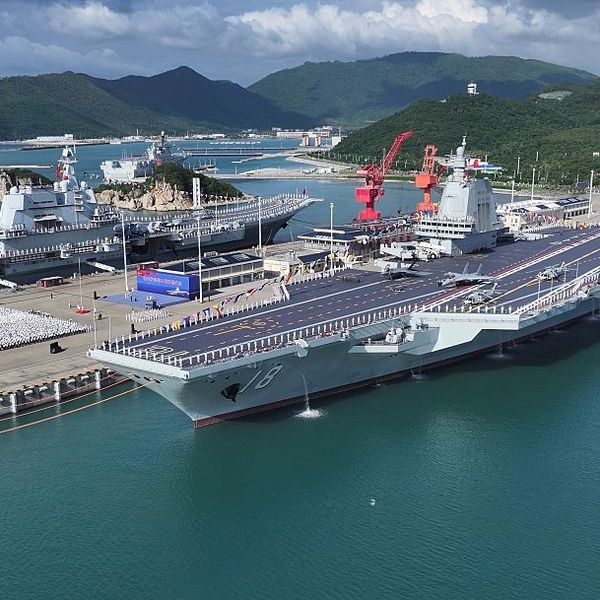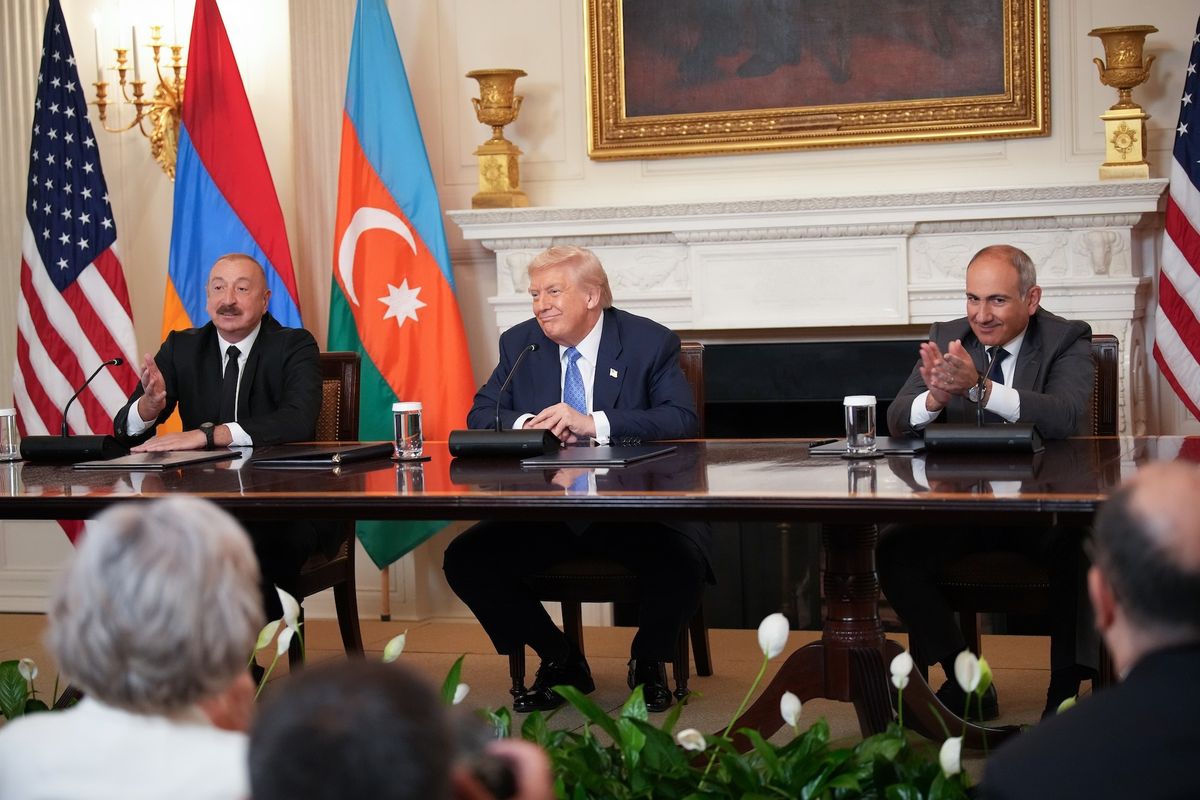Cipher Brief Expert John E. McLaughlin is the Distinguished Practitioner in Residence at the Johns Hopkins School of Advanced International Studies (SAIS) where he teaches a variety of courses and conducts research. McLaughlin served as Acting Director of Central Intelligence from July to September 2004 and as Deputy Director of Central Intelligence from October 2000 to July 2004.
OPINION — This presidential campaign, like nearly all its predecessors, features a lot of tough rhetoric on China and the various threats it poses. But once the campaign rhetoric fades, the victor will have to figure out what to actually do about China. In truth, managing the U.S. relationship with China is the challenge looming over all other aspects of foreign policy; it is sure to affect success or failure in all we do — and in many other economies around the world.
Scholars, think-tankers, and current and former government officials hold a broad spectrum of views, ranging from those emphasizing a dire Chinese threat to those calling for a reset from Trump’s confrontational posture. When searching for a reasonable policy posture in the midst of such division, I always start by asking: What are the realities we have to deal with? Here are four that stand out to me as Washington crafts China policy in 2021.
First, it is hard to sustain the long-dominant American notion that simply supporting China’s rise would ultimately make it the “responsible stakeholder” many envisioned in international trade and in the global order created mainly by the U.S. after World War II. This has been the ardent American hope since Chinese leader Deng Xiaoping 40 years ago began reforming China’s economy. But current President Xi Jinping's statements and China’s actions are hard to read in any way other than, at minimum, signaling deep dissatisfaction with the current global order or, at maximum, a desire to replace it with one revolving around a series of interlocking political and economic relationships with China. So, yes, China rejects the “rules” that the U.S. crafted during its years of preeminent global power.
Second, China will continue growing economically, even if at a slower pace than during its boom decades of double-digit expansion. Its economy is already one-third larger than that of the U.S. in purchasing power parity and will achieve parity soon in nominal rates. It produces 30 percent of global manufacturing and is the major trading partner for about three-fourths of the world’s countries.
Third, China’s military modernization over the last four decades means it poses greater risk to U.S. forces in the Pacific — with an aspiration to be dominant in the region by 2049. The U.S. may still have in absolute terms the world’s strongest military, but the bipartisan National Defense Strategy Commission in 2018, highlighted China’s growing naval and missile arsenals and worried that the U.S. might “struggle to win and might even lose” a conflict with China. Meanwhile, China plans to double its nuclear arsenal in the next decade, according to the Pentagon. Within five years, it will have about 200 nuclear warheads capable of hitting the U.S. (keeping in mind that the U.S. has about 3,800 and that China’s posture is defensive, eschewing a nuclear first strike).
Fourth, although China seems unable to build values-based alliances rivaling those of the U.S., it is fielding transformational ideas attracting large participation, much as the U.S. did after World War II. Its Asian Infrastructure Investment Bank (AIIB) has drawn participation from many American allies, including half of NATO and many Asian partners, such as Australia. Beijing’s Belt and Road Initiative (BRI) is gradually connecting China with the Middle East and Europe through a network of roads, rail, ports and air agreements. And in the wake of American withdrawal from the Trans-Pacific Trade Partnership, China threw its weight behind a comparable pact, the fifteen-nation Regional Comprehensive Economic Partnership (RCEP) whose Asia-Pacific members comprise one-third of the earth’s population and production.
In the face of such realities, there is no perfect strategy for U.S. foreign policy — but there are strategies to avoid. One is the “economic decoupling” that many tout as the way to end any dependence on China and weaken its economy. But our two economies are too entangled to realistically plan this— the U.S. buys on average around $500 billion in goods of all kinds from China (ranging from sophisticated electronics to common household items) annually and sells more than $100 billion to China (ranging from transport equipment to electronics and food), along with $300 billion in computer chips alone. The concept of decoupling also creates needless fear of head-to-head competition, which we simply have to face, and in which we continue to enjoy significant advantage. This includes even emerging technologies such as artificial intelligence, according to several recent university studies, in part because of our open research tradition — the very opposite of decoupling.
Presumably, we want a strategy that leads to something other than military conflict. Accepting that means that at any point, our relationship, even if it has moments of hostility, can also be marked by moments of partnership or shared interests on some issues (North Korea, terrorism) and by intense competition on a range of economic and political matters. In other words, we must accept that the relationship will be complicated and resist characterization by labels that echo the past, like “containment” or “Cold War” — terms inherited from a conflict with an adversary that disappeared. China will not disappear.
Our China strategy will require the flexibility to adjust to changing circumstances, but starting principles could include:
- A determination to compete aggressively on all measures of power and influence and to implement this with an American “whole-of-government” effort — that is, a strategy that marshals all parts of the U.S. government in a coordinated manner — economic, military, diplomatic, and intelligence.
- Enhanced consultative mechanisms with China — military, diplomatic, economic, intelligence — to foster mutual comprehension and conflict management.
- U.S. cultivation and strengthening of U.S.-based alliances — aimed not at walling off China, but at coordinating interaction with it. This is our most effective “force multiplier."
- Focusing on aspects of U.S. defense modernization, acquisition, planning, and deployment that give priority to enhancing deterrence— with the overriding aim of discouraging Chinese provocations that can lead to conflict.
In sum, China presents a multi-dimensional challenge, unlike any the United States has ever seen — in a more complicated competitive environment than we have faced before. This requires a strategy, meaning clarity about a desired end state and the means for getting there. Maintaining decisive influence will require more agility and adaptation than we are showing now or have shown in the recent past.
This column by Cipher Brief Expert and former Acting Director of CIA, John McLaughlin was first published by our friends at Ozy.
Read more expert-driven national security insight, perspective and analysis in The Cipher Brief














